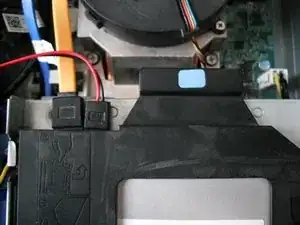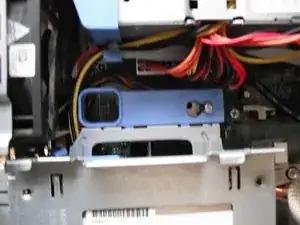Introduction
Fairly easy repair to a device which is very expensive to replace.
Tools
Parts
-
-
Dead PSU caused by failed 120uF 400V capacitor. This in turn caused the switching MOSFET (SPA15N60C3) and on-board fuse to fail. Replace capacitor, transistor (uprated to SPA20N60C3) and fuse (6.3A ceramic). A 3.15A fuse can be used if only used on 220V.
-
To remove PSU, release 3 clips on front panel and remove, unplug DVD and HDD connectors, then unclip and slide out DVD and HDD. Remove 3 screws on back of PSU, blue cable clip and 2 motherboard connectors. Release PSU clip at front of PSU then slide it forward and out.
-
Remove 4 screws on PSU case and remove cover. Remove cable ties, earth screw and 3 circuit-board screws. Remove circuit board as far as possible. To access the transistor and capacitor, remove the heatsink by unsoldering 3 components and 2 heatsink lugs.
-
Replace the faulty components and fuse. If the replacement transistor is the insulated version, you can remove the mica washer and screw insulator. Apply fresh heatsink compound. Check for any bulging secondary capacitors. Then reassemble.
-
Install PSU back into PC, then apply power before installing remaining components to ensure that repair was successful (LED on motherboard). If all is good, continue reassembly and final test.
-
To reassemble your device, follow these instructions in reverse order.




Awesome guide Andy, but how can one diagnose the failure of this specific mosfet and cap (I know how to test a fuse)
My power supply does not power up the PC, the indicator light does not come on, and it makes a very faint cyclic electrical whining noise (like a mosquito flying by my ear)
John Etter -
Using a multimeter on resistance or diode test, a faulty mosfet will read short circuit between source and drain (and maybe gate too). The capacitor may be doming (i.e. top is not flat), this is a sure (but not only) sign of failure. You would need specialist equipment to measure the capacitor, so best to assume that is has failed, and replace it.
Andy Fraser -
Thanks Bro, this is help full for me, Continue
Arshad Iqbal -